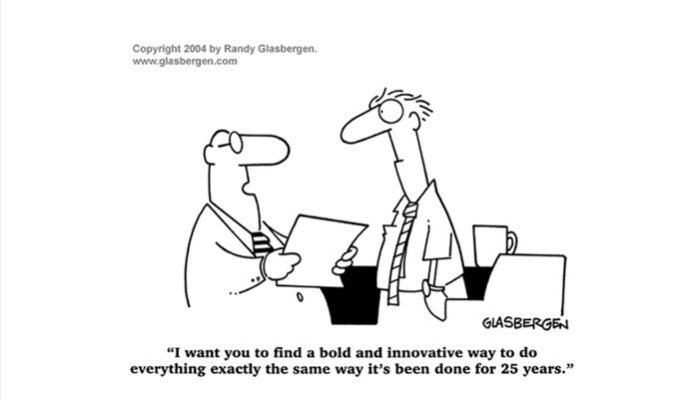I spend my time with clients thinking about and implementing major change initiatives. We pour over data, have workshops on what we need to do, how to do it, risks, metrics, implementation plans.
Ultimately, we come up with a launch program.
At that point, I stick a monkey wrench into the process, sometimes frustrating the client who wants to move forward.
I ask two questions:
- “What’s in it for the people we are inflicting this change on?” (Usually, it’s the sales people.)
- “How are they going to ‘game’ this?”
Often, the responses are something like, “They need to do these things to get the results we are trying to achieve….” or “We’re telling them they need to do things differently….” As we see so often, we focus on what we are trying to achieve, not what it means to the people critical in implementing the change.
And that’s why so many of our change initiatives fail–not because we are doing the wrong thing, but because the people so important to change initiatives don’t understand them.
What’s in it for the people we are trying to get to change? It’s natural for people to resist change, if they don’t understand why they need to change, what they need to do, how they should be doing it……even if they want to change they will struggle. We need to think in about value creation for these audiences. How does this help them achieve their goals more effectively? How does it simplify things for them? Why should they be eager to embrace the change?
If we can’t answer these as we design our change initiatives, we put the whole change at risk.
The other thing that’s important to consider, “How will people game this?” It’s not through any maliciousness or lack of support, people will tend to take shortcuts, they will tend to do the things that are easiest, least distracting for them. They may do things in a way that may adversely impact what we are trying to achieve with the change initiative.
Gaming things is just human nature, we all do it. So we have to test our change initiatives based on how people will game it. If we achieve our goals, even with them gaming it, we probably have a good plan. If we don’t, then we have a bad design.
As an example, we see these behaviors in many “fix the pipeline initiatives.” We say, “you need to get more in your pipeline….” That’s actually pretty easy, any sales person should be able to fill their pipelines, meeting your goals very quickly. But often in doing that, they fill the pipeline with lower quality or the wrong opportunities. So we have to set stronger criteria for what we are looking for and how they can achieve the goal.
Change is always difficult, but we can increase the engagement of the people we need to drive the change by just thinking about these two things.

Leave a Reply